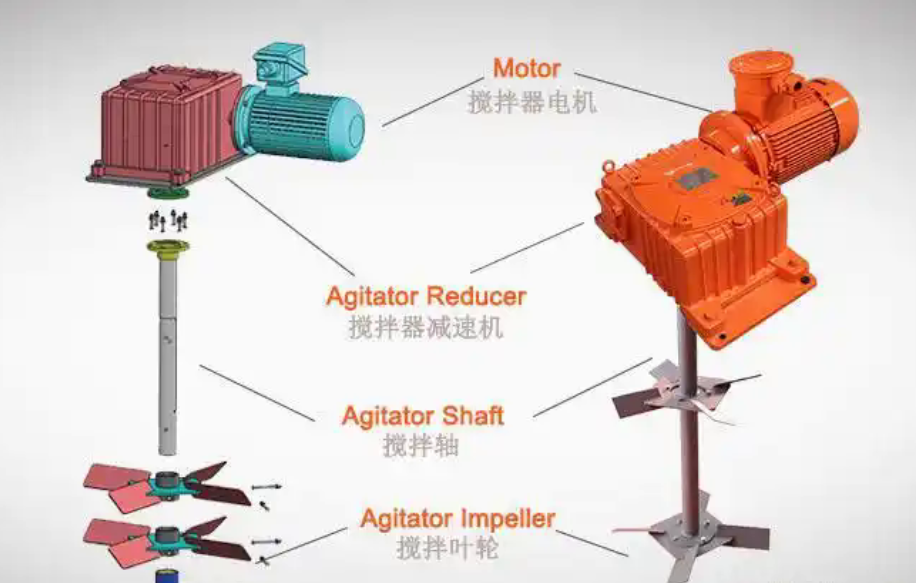Mud agitators can actually be divided into different types depending on how the gearbox and motor are connected, the shape of the impeller, the type of fluid being mixed, and their specific application. For example, by gearbox connection, they can be worm-gear type or bevel-gear type; by impeller design, they can be flat-blade, pitched-blade, or helical-blade; by flow pattern, they can be axial flow, radial flow, or mixed flow; and by use, they can be designed for low-viscosity or high-viscosity fluids.
Here, let’s look at three common types based on flow direction: turbine type, propeller type, and paddle type.

1. Turbine-Type Mud Agitator
This is the most widely used type in drilling mud mixing. It works well across a wide range of viscosities and is usually applied for low-viscosity fluids. Turbine agitators come in two main forms: open type and disc type.
- Open type impellers include flat blades, pitched blades, and curved blades.
- Disc type impellers usually have 6 blades, such as flat, pitched, or curved blade discs.
Open impellers often have 2 or 4 blades, while disc impellers are most commonly 6-blade designs. These agitators create high shear forces, which break fluid clusters into fine particles, making them great for mixing, liquid–liquid dispersion, and suspending solids in low- to medium-viscosity fluids. Flat blades provide strong shear, while curved blades reduce power consumption and are better when fragile solid particles are involved.
2. Propeller-Type Mud Agitator
Standard propeller agitators usually have three blades, with the pitch equal to the blade diameter. They don’t create much turbulence, but they move a large amount of fluid, which gives them strong circulation performance. They are simple, cost-effective, and best suited for low-viscosity fluids where high flow and circulation are needed rather than high shear.
Typically, the blade diameter is about one-quarter to one-third of the tank diameter, and the tip speed ranges from 7–10 m/s, with a maximum up to 15 m/s.
3. Paddle-Type Mud Agitator
These impellers are made of flat steel blades fixed to the hub with welding or bolts, usually with 2, 3, or 4 blades. They come in two designs: flat-blade and pitched-blade. Paddle agitators are mainly used for fluid circulation.
Among them, pitched-blade paddles are more common because they consume less power than flat-blade paddles at the same flow rate. In an axial-flow design, the liquid is pushed along the axis of the shaft, which promotes good top-to-bottom fluid exchange. They can even handle higher-viscosity fluids and sometimes replace more expensive helical ribbon impellers.
Paddle agitators usually run at 20–100 rpm and can handle viscosities up to 20 Pa·s.
Overall, turbine, propeller, and paddle agitators are the most common types you’ll come across. But beyond these, there are still many other designs. In oilfield drilling mud solids control systems, worm-gear turbine agitators are currently the most widely used.

